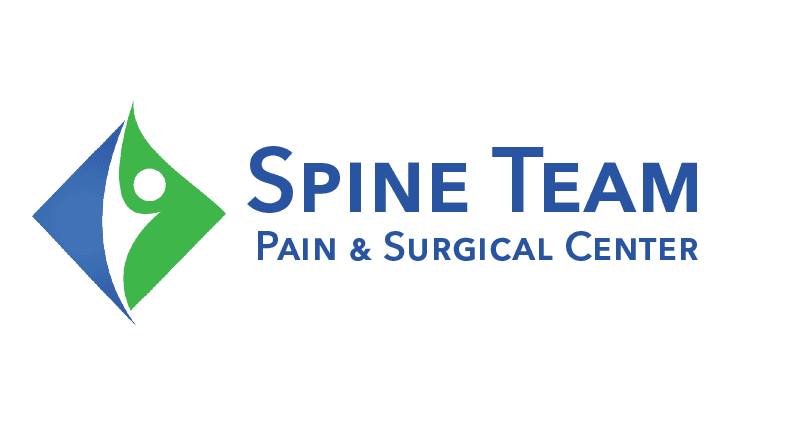What Is Stellate Ganglion Block

Many people live with constant pain. A stellate ganglion block can offer relief. This article will explain how it works and who might need it. Keep reading to learn more.
Key Takeaways
- A stellate ganglion block is a procedure where doctors inject medicine near the neck to stop pain and improve blood flow. It helps with conditions like nerve injuries and PTSD.
- The procedure involves numbing the skin, using imaging to guide a needle, and injecting medication. Patients should rest and avoid driving after it.
- This treatment can lead to some risks such as infection or nerve injury. But many people find relief from pain and better blood flow after getting it.
Find Relief from Pain with Stellate Ganglion Block
Living with pain can be overwhelming, but a stellate ganglion block may offer the relief you've been seeking. Whether you're dealing with nerve injuries or conditions like PTSD, this treatment could make a difference in your life. Curious to learn more or ready to take the next step?
Visit the Spokane Spine Team for more information on their services. To learn specifically about the stellate ganglion block, check out their detailed service page here. If you're experiencing pain and want to get in touch, contact us or call 509-363-3100 to schedule an appointment. Relief is just a call away!
Overview of Stellate Ganglion Block
Stellate ganglion block is a procedure to manage pain and circulatory or nerve issues by injecting local anesthetic near the stellate ganglion in the neck. The injection interrupts sympathetic nerve signals, providing relief from symptoms like chronic pain, circulation problems, and anxiety.
Definition and Purpose
A stellate ganglion block is a procedure to stop pain signals sent through the sympathetic nerves. It involves injecting medicine near your neck's nerve tissue. This block can help treat pain from conditions like complex regional pain syndrome and post-traumatic stress disorder.
The goal is to provide relief from discomfort and improve blood flow.
Doctors use it not just for managing pain but also for improving symptoms in other conditions. For example, people with circulation problems or anxiety symptoms due to PTSD may find relief after this treatment.
The injection targets the nervous system directly, helping reduce symptoms quickly.
Key Components of the Procedure
Doctors perform stellate ganglion blocks to treat pain and certain other conditions. They use a local anesthetic. This numbs the stellate ganglion, a nerve bundle in the neck. The procedure aims to stop pain signals sent by these nerves.
First, patients sit or lie down in a way that lets doctors access their necks easily. Using a special X-ray called fluoroscopy helps them see where to inject the medicine. They clean the skin and then carefully guide the needle to the right spot near the inferior cervical ganglion, part of the sympathetic nervous system.
After making sure they have placed it correctly, they inject the medication and then watch over patients for any immediate reactions.
Indications for Stellate Ganglion Block
Stellate ganglion block is used to manage pain and treat circulatory and nerve issues. It's often utilized for conditions like reflex sympathetic dystrophy, nerve injuries, and post-traumatic stress disorder.
Pain Management
A stellate ganglion block helps with pain relief. It targets the nerves in the neck that can cause pain in the head, neck, chest, or arms. This treatment can help those suffering from reflex sympathetic dystrophy or nerve injuries.
By blocking these nerves, it reduces pain and improves quality of life.
This method is also used for people with post-traumatic stress disorder (PTSD). Doctors have found that it can treat symptoms by calming the body's "fight or flight" response.
Stellate ganglion block offers a ray of hope for those struggling with chronic pain and PTSD.
Treatment of Circulatory and Nerve Issues
Stellate Ganglion Block is used to treat circulatory and nerve issues. It can help with conditions like Complex Regional Pain Syndrome (CRPS) and peripheral vascular diseases. The block works by stopping the sympathetic nerves in the neck from sending pain signals, which can improve blood flow and reduce inflammation.
This procedure has shown promising results for patients suffering from these specific issues.
For circulatory problems, Stellate Ganglion Block allows for better blood flow to the affected area, reducing symptoms such as coldness or discoloration in the hands or feet. In terms of nerve issues, it can ease pain and other discomfort associated with conditions like CRPS or post-traumatic stress disorder (PTSD).
Studies have revealed that this treatment can significantly alleviate symptoms related to these conditions, providing much-needed relief to patients dealing with their everyday challenges.
Procedure Details
Stellate ganglion block involves injecting medication near the base of the neck to alleviate pain and improve circulation. The injection targets a cluster of nerves in the neck known as the stellate ganglion, helping to address various conditions such as chronic pain and circulatory issues.
Steps Involved in the Injection
To perform a stellate ganglion block, the following steps are typically involved:
- Patient Preparation: The patient is positioned on their back, and the injection site is cleaned with an antiseptic solution.
- Numbing the Skin: A local anesthetic is used to numb the skin and tissues around the injection site to minimize discomfort during the procedure.
- Imaging Guidance: Fluoroscopy or ultrasound may be used to help guide the placement of the needle into the stellate ganglion region.
- Needle Insertion: A thin needle is carefully inserted into the target area in front of the neck muscles under real-time imaging guidance.
- Injection of Medication: Once in position, a mixture of local anesthetics and possibly steroids or other medications is slowly injected around the stellate ganglion nerves.
- Monitoring and Recovery: The patient's vital signs and symptoms are closely monitored for any immediate adverse effects after the injection, and post-procedural care instructions are provided.
This comprehensive procedure aims to alleviate pain and reduce sympathetic nerve activity in targeted areas like chronic pain conditions or certain circulatory disorders.
Aftercare and Recovery
After the stellate ganglion block procedure, you may experience some aftereffects. It's important to follow these guidelines for aftercare and recovery:
- Rest: Take it easy for the rest of the day following the procedure to allow your body to recover.
- Avoid driving: Refrain from driving or operating heavy machinery for at least 24 hours after the procedure due to potential drowsiness or numbness in the arm.
- Monitor injection site: Keep an eye on the injection site for any signs of infection, such as redness, swelling, or increased pain.
- Pain management: Use over-the-counter pain relievers as directed by your healthcare provider to manage any discomfort at the injection site.
- Follow-up appointment: Attend your scheduled follow-up appointment with your doctor to assess your progress and address any concerns or issues post-procedure.
- Activity level: Gradually resume normal activities, avoiding strenuous exercise and heavy lifting for a few days after the procedure.
- Hydration: Drink plenty of water to help flush out any remaining contrast dye used during the procedure and stay properly hydrated.
- Watch for complications: Be mindful of symptoms like severe chest pain, difficulty breathing, or allergic reactions, and seek medical attention if they occur.
Risks and Benefits
There are potential complications related to the procedure, and expected benefits may vary among individuals. Understanding these factors is crucial before considering a stellate ganglion block.
Potential Complications
Stellate ganglion block, although generally safe, may come with some potential complications. It's essential to be aware of these risks before undergoing the procedure. Here are some potential complications to consider:
- Nerve injury: There is a small risk of nerve damage during the injection process.
- Bleeding or hematoma formation at the injection site: This can lead to pain and swelling.
- Infection: Although rare, there is a risk of infection at the injection site.
- Allergic reactions: Some individuals may experience an allergic reaction to the medications used during the procedure.
- Horner's syndrome: In some cases, patients may develop Horner's syndrome, characterized by drooping eyelids and constricted pupils.
It's important to discuss these potential complications with your healthcare provider and weigh them against the expected benefits of stellate ganglion block.
Expected Benefits and Success Rates
Expected benefits and success rates of stellate ganglion block are significant for patients. This procedure offers relief and improvement in several conditions.
| Benefits | Success Rates |
| Reduces pain from various conditions | Up to 80% for certain pain syndromes |
| Improves blood flow | Varies, positive outcomes in most cases |
| Decreases symptoms of anxiety and PTSD | Around 70% of PTSD patients |
| Helps in managing hot flashes and sweating | Efficacy reported in the majority of patients |
Patients see a range of benefits. Many report less pain. Some find they manage better in daily life. Success rates depend on the issue being treated. Most patients respond well to this treatment.
Conclusion
In conclusion, a stellate ganglion block is a procedure used for pain management and treating circulatory or nerve issues. It involves injecting medication near the first thoracic ganglion to alleviate symptoms.
While it carries some risks, such as infection or bleeding, the potential benefits include pain relief and improved circulation. Overall, stellate ganglion blocks can be an effective option for addressing certain medical conditions.
FAQs
1. What is a Stellate Ganglion Block?
A Stellate Ganglion Block is a medical procedure used to relieve pain and improve symptoms in conditions affecting the sympathetic nervous system, such as chronic pain, PTSD, or nerve-related issues in the face, neck, or arms. The procedure involves injecting a local anesthetic near the stellate ganglion—a bundle of nerves in your neck—to block pain signals and provide relief.
2. What conditions can a Stellate Ganglion Block treat?
A Stellate Ganglion Block is commonly used to treat conditions like complex regional pain syndrome (CRPS), post-traumatic stress disorder (PTSD), and nerve pain in the arms, shoulders, or face. It can also help with certain types of headaches or facial pain, offering patients long-term relief from chronic discomfort.
3. How does a Stellate Ganglion Block work?
A Stellate Ganglion Block works by numbing the stellate ganglion, a group of nerves responsible for sending pain signals to the brain. By temporarily blocking these signals, the procedure helps reduce pain, inflammation, and other symptoms associated with nerve disorders. It often provides immediate relief, allowing patients to regain mobility and improve their quality of life.
4. Is a Stellate Ganglion Block safe?
Yes, a Stellate Ganglion Block is generally considered safe when performed by an experienced healthcare professional. Like any medical procedure, there are some risks, but serious complications are rare. Most patients experience minimal side effects, such as temporary hoarseness or soreness at the injection site, which usually resolves quickly.
5. How long does the relief from a Stellate Ganglion Block last?
The duration of relief from a Stellate Ganglion Block can vary depending on the individual and the condition being treated. Some patients experience relief for weeks or even months, while others may need a series of blocks for sustained benefits. Your doctor will work with you to determine the best treatment plan based on your specific needs.
6. Who is a good candidate for a Stellate Ganglion Block?
Anyone suffering from chronic pain, nerve damage, or PTSD may be a good candidate for a Stellate Ganglion Block. If you have tried other treatments without success, or if your pain is interfering with daily activities, this procedure could provide the relief you’ve been looking for. Consult with your healthcare provider to see if it's the right option for you.




